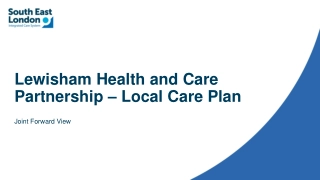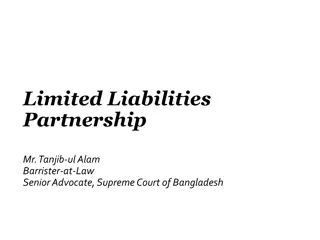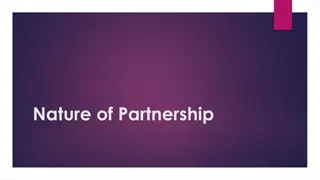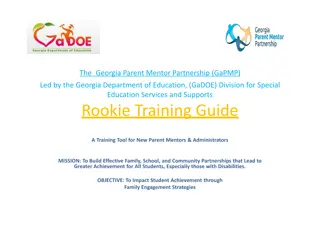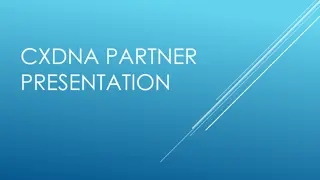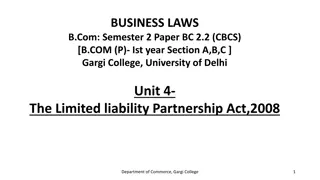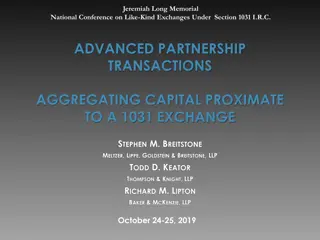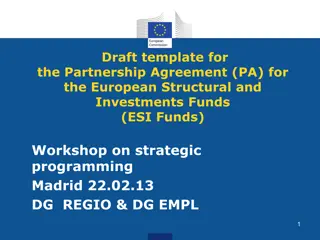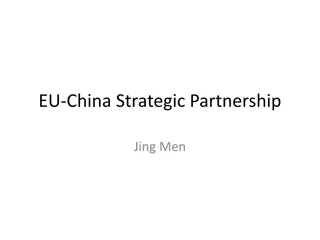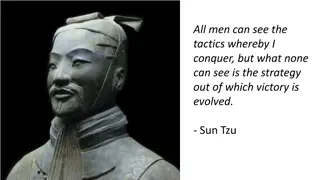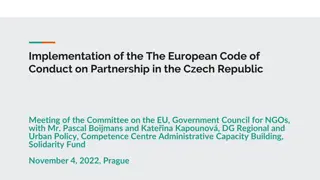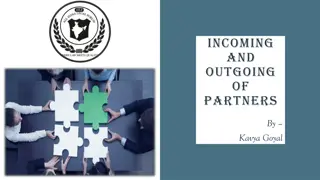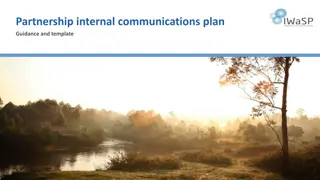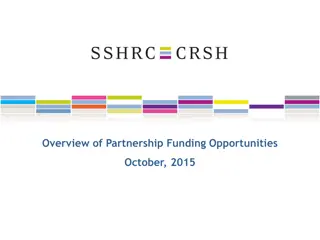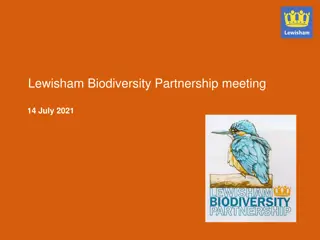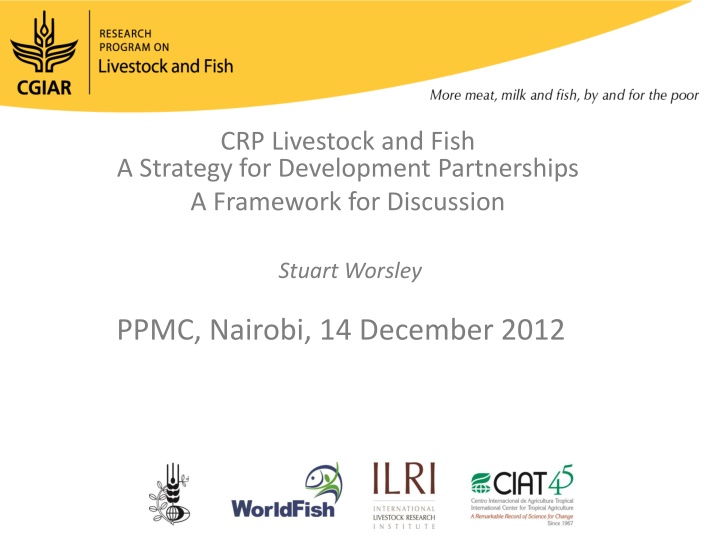
Livestock and Fish Development Partnerships: Building Sustainable Impact
The Livestock and Fish program focuses on fostering partnerships to achieve sustainable development goals in agriculture. By collaborating with various stakeholders, the program aims to improve animal source food productivity, enhance value chains, and reduce animal-source food-borne diseases, ultimately benefiting the poor and promoting equitable growth.
Download Presentation

Please find below an Image/Link to download the presentation.
The content on the website is provided AS IS for your information and personal use only. It may not be sold, licensed, or shared on other websites without obtaining consent from the author. If you encounter any issues during the download, it is possible that the publisher has removed the file from their server.
You are allowed to download the files provided on this website for personal or commercial use, subject to the condition that they are used lawfully. All files are the property of their respective owners.
The content on the website is provided AS IS for your information and personal use only. It may not be sold, licensed, or shared on other websites without obtaining consent from the author.
E N D
Presentation Transcript
CRP Livestock and Fish A Strategy for Development Partnerships A Framework for Discussion Stuart Worsley PPMC, Nairobi, 14 December 2012
Background The GCARD Road Map declares the need for true and effective partnership between research and those it serves and describes a well-functioning AR4D system as one that is committed to action for impact and that invests in ensuring equitable partnership and accountability among all stakeholders in agricultural innovation and developmental change
Background CRP Livestock and Fish aims to realize vision by fostering partnerships that harness the respective strengths of research and development partners, including the private sector, and relevant CRPs. An organizational and implementation strategy and framework will be established to ensure the smooth functioning of the Program and its partnerships, including a Partnership Strategy for ensuring that the key partnerships that the Program will rely on are developed and supported, so as to make a strong contributions to the Program goals
Background CRP Livestock and Fish will experiment in different methods and approaches to assure development impact and will deliver, through its partnerships Tangible results at scale Global research public goods; proof of concept This means that what we do in partnership is part of a larger experiment that tests innovation systems and enhances policy environment
Success when Sustainable technical and institutional interventions have been developed and are being widely used Approaches and methodologies that have achieved impact have been documented and widely acclaimed The poor consume more and better quality animal source foods consumption and are better nourished Animal source food productivity has improved equitably and sustainably Animal source food value chains operate better and more equitably with increased income for all chain segments. There are less zoonoses and animal-source food-borne diseases
Principles for Partnership Defined through consultation at GCARD2 Specific development issues should frame partnership - jointly mapped & understood shared value Roles and functions within partnerships, defined and agreed Partnership working is a team idea. Shared purpose and vision of success a culture of collaboration, celebration of and reliance on partner success, real investment in relationship and full transparency Within partnering organisations, home organisational culture must be nurtured to enable and support effective partner functioning Attribution for action is a collective accolade. Performance should be defined at a collective and system level. Space for this approach should be enabled by funders Joint Learning should form a critical element of all partnerships, where evidence is reviewed, reflected on, documented and tested. This seeks to foster evolution and progress towards tipping points. Regular review of partnerships should openly consider improvements in approaches, performance and practice.
The Strategy Facilitation and Catalysis of System Wide Change 1. Define principles and methodology for stimulating alliance and partnership at local, regional and global levels Determine key issues that stimulate shared value and vision in target areas (value chains, locations), and in components Define frameworks for specific partnership action-and-learning based alliances around selected issues Facilitate partnership action and learning around selected issues Review partnership working and results; document performance of partnerships and collective system results Revise structures and processes to assure evolution towards continued fitness-for-purpose 2. 3. 4. 5. 6.
1) Methodology principles developed for local, regional and global partnerships Local Level: Principles to be framed around Participation (engaging widespread interest and activism) Sustainability (growing solutions from actor interest) Learning (capture and share what works, and what does not) Scaling (pressing action around tipping points) (platforms and other multi stakeholder processes, cross actor learning architecture) Regional/Global 2 Building on key chain alliances across wider geography Building on component issues (methods, technologies etc.)
2) Determining Key Issues that Stimulate Shared Value and Vision Country and Chains Mapping VC dynamics issues that buzz , actors that are engaged Define cross value chain action frameworks around interest who is acting, who wants to act, what scope for convergence and alliance Regional and Global Review of regional and global shared value, vision and interest in areas that relate to chains, target areas and components
3) Form Initial Specific Partnership Action-and- Learning Alliances With chain actors and potential partners, define frameworks for specific chain work Form multi stakeholder forums focused on stimulating action, reviewing results and deriving evidence Design and install inter forum protocols and methods for learning and evidence testing
4) Facilitate Partner Action and Learning Around Selected Issues Define core actors to assume critical roles Frame partnerships around action a) in chains, b) across chains, or c) in components Facilitate platform function, and where appropriate CRP will Act directly (to seed processes) Subcontract action (to seed process and/or foster scale) Joint Action with others Stimulate action by others (to foster scale)
5) Review Partnership Working and Results Document Performance and Learning Review and document partnership working - Structures, systems and processes, and their contribution to partner and wider actor Action and commitment Coherence Adaptation and self renewal External relationship Delivery on development results Review and document programme performance within specific partnership alliances and between partnership alliances. Publish key findings in policy advisory papers
6) Revise Partnership Structures and Processes Use partner reviews to collectively design and install changes in partner relation structures, systems and processes Seek ways to consolidate independent collaborative instruments that service value chains beyond programme engagement

